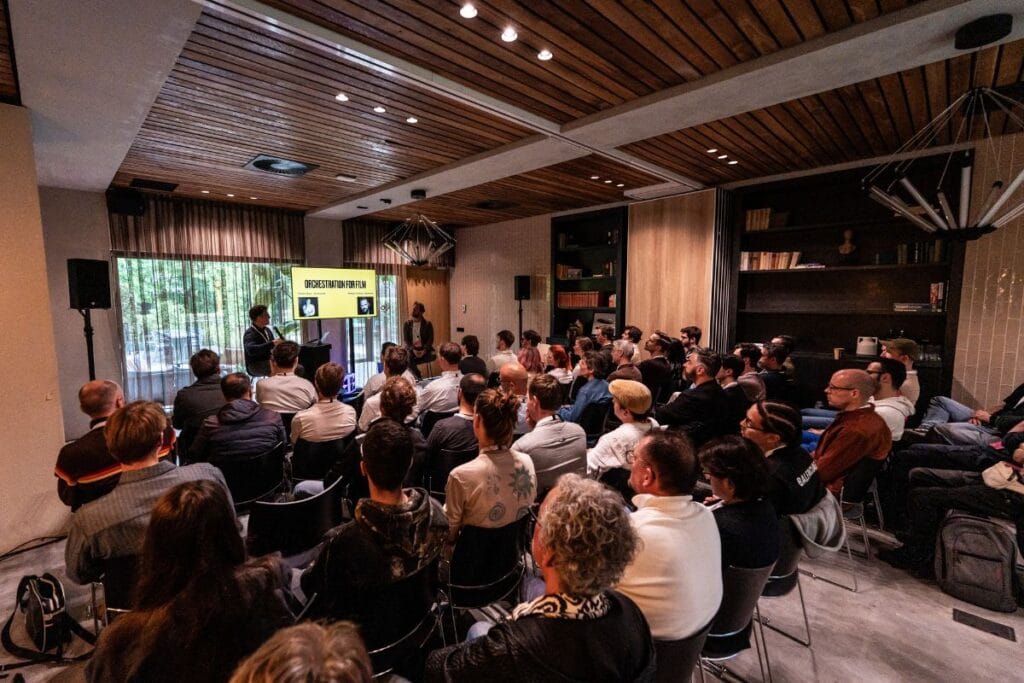What exactly does an orchestrator do? And how is that different from an arranger? During BMIM Special, Danish orchestrator Thomas Bryla offered insight into his craft – from score to studio, from soft skills to shortcuts. Together with moderator (and longtime collaborator) Matthijs Kieboom, he explored the world behind the notes.

From piano to full score
Bryla, who has worked with heavyweights like Don Davis, Rachel Portman and Johan Johansson, demonstrated how he turns a simple piano part into a full orchestral track. He discussed a project in which he arranged music for a Danish drama-documentary. The composer he worked with is usually rooted in the pop world, and this time delivered only basic piano sketches. Bryla transformed them into orchestral passages full of colour, rhythm and dynamics. Bryla explained:
An arranger adds new elements like harmonies or extra melodies. An orchestrator works within the framework of the existing composition and translates it for the orchestra.
Soft skills and structure
Bryla’s approach is not only technical, but also highly people-oriented. ‘As an orchestrator, you’re often the link between composer, recording supervisor and performing ensemble. So you not only need to be musically skilled, but also able to collaborate, communicate and sense what a project requires.’
He stresses the importance of trust and structure: ‘Composers may spend months on a score, but they only record a few times a year. As an orchestrator, I help them by safeguarding deadlines and providing structure. That brings peace of mind.’
Creativity on a deadline
Contrary to the romantic idea of the composer waiting for inspiration to strike, Bryla’s workday is tightly organised. ‘It looks more like the life of an accountant than that of a rockstar,’ he jokes. ‘I work at set times, keep everything well-structured, back up all versions and know exactly how much time I need for each part.’
That also means: lots of tools and software. Finale, Sibelius, Dorico; he masters them all. To save time, he has fully automated his workflow with tools like Keyboard Maestro and Stream Deck. ‘Within five seconds, all my windows are set up. Anything to get to the music faster.’

The nuance of live
Bryla also demonstrated how subtleties in orchestration can make a big impact. Like that time in Prague, where he enhanced pizzicato passages by having the first chair also play col legno. Small touches, big effect, especially in a recording space where every nuance is picked up by the microphones.
And he also thinks ahead when it comes to performance: ‘For example, by making harp parts optional via cue notation. That way, you maintain flexibility until the very last moment of the session.’
Orchestration as invisible art
Whether he’s working on a Hollywood score or an intimate TV series, Bryla’s goal remains the same: to translate the composer’s vision into an orchestra that breathes, speaks and moves. ‘Good orchestration isn’t something you hear,’ he says. ‘You feel it.’
The session was not only a masterclass in notes and nuance, but also a tribute to the invisible craftsmanship behind the scenes. Or, as Matthijs Kieboom put it: ‘When I get stuck, musically or otherwise, I call Thomas. He fixes it. Always.’
Text by Meike Jentjens
Photos by Birgit Bijl